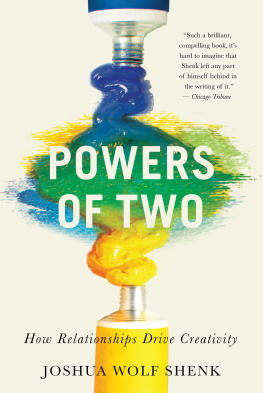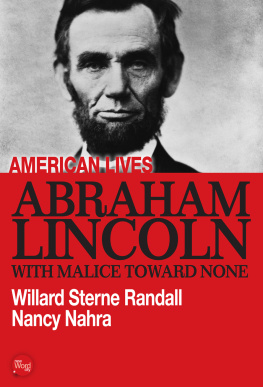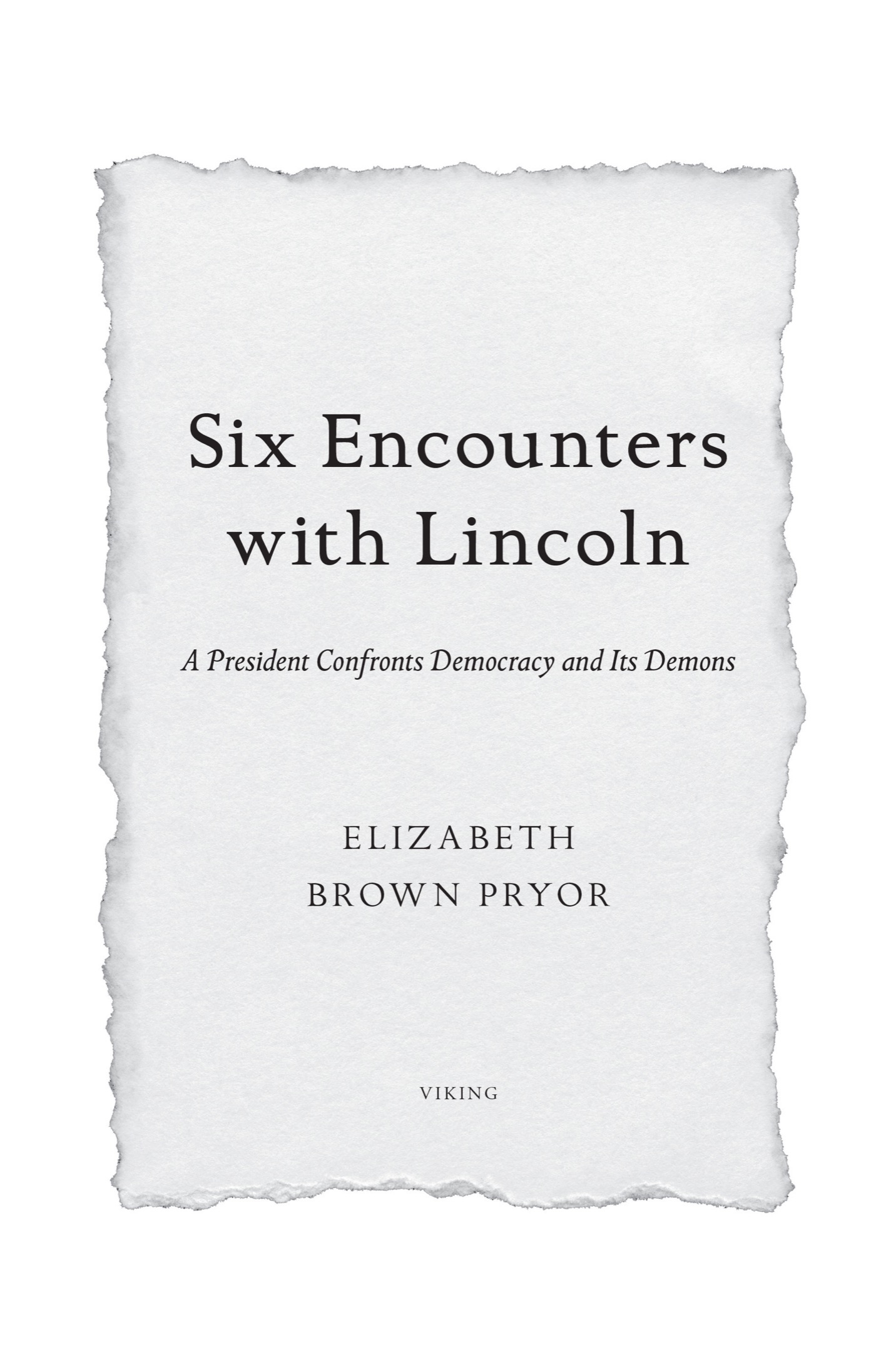Foreword

M y sister Elizabeth Brown Pryor tragically lost her life on April 13, 2015. A manic-depressive driver, who thought that he could fly his car, was trying to taxi down a quiet city street in Richmond, Virginia, when he rear-ended her beloved Audi TT at 107 miles per hour. She was instantly killed. She left behind two completed manuscripts: one for this book and another for an article, The Grand Old Duke of York: How Abraham Lincoln Lost the Confidence of His Military Command, which will be published separately.
I remember her sheer elation the previous January, when she called me in London to announce that she had finally finished Six Encounters with Lincoln. It had been a long, slow gestation that had begun with a chance discovery in 2008. The day that she received the Lincoln Prize for Reading the Man: A Portrait of Robert E. Lee Through His Private Letters, she had spent the morning doing research at the New-York Historical Society. When she arrived back at the flat where we were staying to change for dinner (into my new Armani jacket), she was ecstatic. Not in anticipation of receiving such a singular honoralthough she was, of course, delighted to receive itbut because she had just discovered an unpublished drawing of Abraham Lincoln sketched in a letter written home during the Civil War. As she put it, There sits Abraham Lincoln, with a familiarity almost unimaginable today, legs folded and tall hat in place, looking for all the world like a cricket perched on the nations front porch.
What had been a brief encounter in 1862 between the President and one of his military guards turned out to be not only a fascinating tale, but a springboard for investigating a neglected but significant aspect of Lincolns administration. Over the next seven years Elizabeth submerged herself in the letters, diaries, and newspaper articles of the 1860s, carefully piecing together six episodes that explored Lincolns difficulty in managing a republic. Her own quarter-century career in the State Department gave her a unique perspective on how slowly the wheels of government turn and how our Founding Fathers insistence on a balance of power could cause the cogs of those wheels to lock in an unwelcome impasse. Few other Civil War historians can marry personal experience with scholarly insight in such a compelling way. She served as the foreign affairs adviser to both houses of Congress and so had an insiders view of the government at work. When we read her criticism of Lincoln as commander in chief, we should remember that she was once the chief U.S. spokesperson for NATO and had earlier been deeply involved with Bosnia, serving in Sarajevo at the time of the siege. She experienced firsthand the importance of military discipline when one was under fire, and she understood that rank matters. As she was fond of saying, she had lived real-time history. It was her unique ability to tie the various threads of her life experience together and reflect upon the lessons she had learned that allowed her to render such a vivid picture of nineteenth-century American history. As one critic put it, The sheer power of [her] language is as inspiring as a great painting.
When I found the manuscript of Six Encounters with Lincoln after her death, the text, footnotes, and bibliography were virtually ready for publication. She had meticulously highlighted in yellow any quotations or page numbers that needed to be rechecked. Only the preface was missing. I undertook the task of checking the notes, quotations, and bibliography, but what appears in the following pages is completely her work in her words. She had ordered four or five photographs, but left no list of illustrations. I knew only that she had once told me that she wanted a lot of pictures. Luckily, since I am an art historian, ordering photographs is one thing I know how to do and my major contribution to this book was deciding what should be illustrated and where it should be placed within the text.
Elizabeth and I and our sister, Peggy, grew up listening to my mothers tales of the Civil War with rapt attention. Not that Mother herself had been around then, but as a child she had spent hours sitting on the front porch in Terre Haute, Indiana, listening to the tales of her great-grandfather John Jackson Kenley. Grandpa Kenley, who according to family lore had lived to the ripe old age of 104 (his military records, however, show him to have been 96 at his death in 1938), had been a foot soldier in the Twenty-Fourth Indiana Regiment. He saw action at the battles of Shiloh, Corinth, Vicksburg, and Mobile as well as the occupation of New Orleans. The house was full of Civil War heirlooms, including the walnut bookcase made for his wedding in 1863, the fork from his mess kit, and a pile of letters, one of which Elizabeth quotes in this book. Yet as she often said, it was not the stuff that got her hooked on the Civil War, but Mothers storytelling ability. History after all means story and Mother was able to make it seem very real to the three of us. Mother died just four months after Elizabeth, but for seven years she had been able to follow the progress of the book from beginning to end, listening to the chapters as they were written. She was inordinately proud that her middle daughter was just as good a storyteller as she was.
On a road trip, Elizabeth retraced the Lincoln familys journey from Virginia to Kentucky to southern Indiana; the same trip that the Kenley family had made in the early years of the nineteenth century. I remember her excitement at finding the gravesite of Grandpa Kenleys mother, who had died as the family passed through the bluegrass country of Kentucky. In her eyes Lincolns history and our history were to some extent inextricably bound. Her trip to what she inevitably referred to as the dreaded CTZ, that is to you and me the Central Time Zone, was tainted only by the lack of three-star Michelin restaurants. For two months she was forced to subsist on a diet of monkey chow, which in her parlance meant Subway sandwiches, chocolate-covered cranberries, and Diet Dr Pepper. The upside, however, was that she saw firsthand the furniture made by Lincolns father and found new insights into the Rail-splitter's boyhood.



















